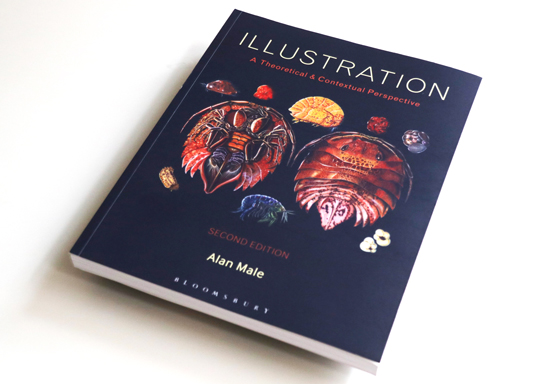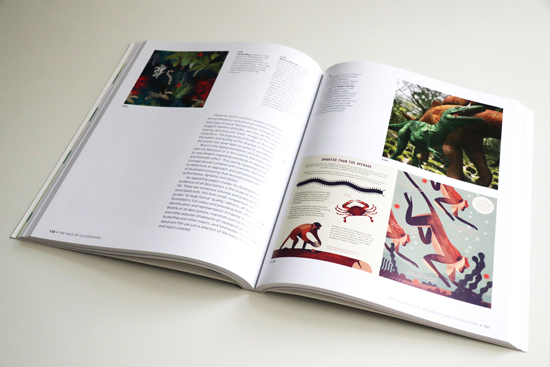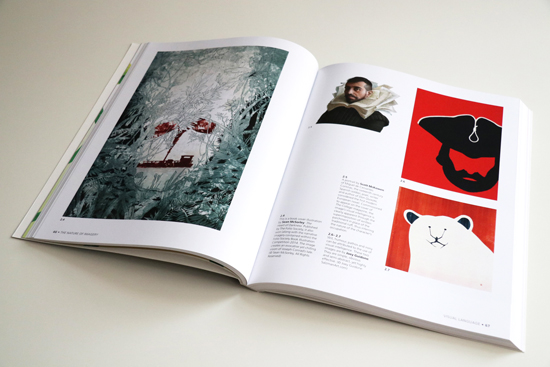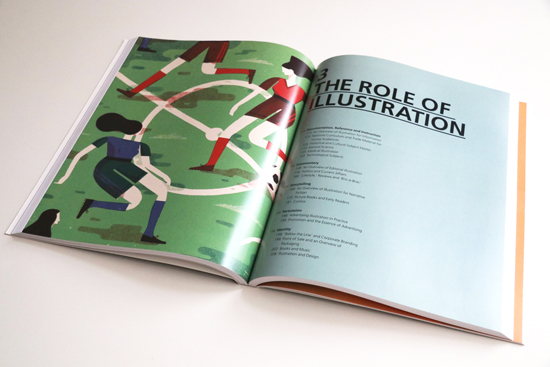Illustration: A Theoretical & Contextual Perspective – Book Review
2nd Edition
Written by Alan Male
Published by Bloomsbury Visual Arts ISBN: PB: 978-1-4742-6302-3
Reviewed by Karl Andy Foster

I am an Illustrator. I have been one for over 30 years. I was excited about reading this book, as I know of the author by reputation. It is quite dry and academic and the writing style doesn’t flow as well as it might. I persevered because my interest wasn’t diminished, although I do wonder if some undergraduate students of design might be intimidated by academic writing.
This book will be a challenge to the uninitiated and is probably more useful for post-graduate level study. It will also be useful for academics and practitioners of illustration. It explores the meaning of illustration through historical contexts and contemporary examples (many from tutors and alumni of Falmouth University) showing the vast array of topics tackled. This second edition includes an additional chapter that focuses on the inter-disciplinary nature of illustration practice and the potential for it to take the lead in the development of design. It is this that is the strength of Male’s argument.

For a book that is supposed to display the power behind visual media and the relevance of illustrated products the size afforded to some of the examples doesn’t really work. Poster sized illustrations shown at postage stamp size, why? Cartoon strips where you can’t read the speech bubbles, why? The layout of the book should allow the power of the illustrations to shine through, as many art books do. This problem is not exclusive to this book. That being said, the images are carefully and appropriately captioned to help the reader to appreciate the context for the work and the manner in which drawing is utilized to communicate value.

Alan Male states that illustration isn’t self-expression but self-expression does lie at the heart of visual curiosity. Illustration is a commercial enterprise that has managed to maintain its relevance and importance regardless of technological advances and changing social mores. The section on how illustrators collaborate with science is really engaging and points to several ways that the status of image-makers can be enhanced. As a Professor of the subject Male knows his onions and fully embraces the variety of construction methods and complex applications used by those of us who channel image as our choice of visual communication.

This book contains a broad range of approaches deemed as illustration and shows how this work impacts on the wider society. Though dry to read in places this book is rich in description, breadth and scope of this subject. It is clear that the illustrator is at the heart of the destiny of this profession not the industry. Alan Male advocates that illustrators should be consulted at the start of a commission and we are essential to the development of dynamic and significant work. We are most definitely not ‘colouring in technicians’.
You may also be interested in these book reviews:
Illustration: Meeting the Brief
Becoming a Successful Illustrator
Back to News Page
